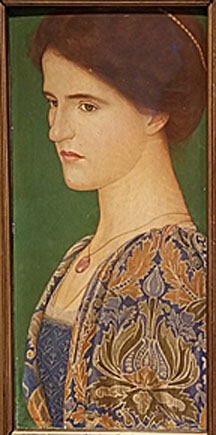
Elizabeth Macneal is the author of a popular book, The Doll Factory. Her heroine, Iris Whittle, works in a Doll Emporium with her sister Rose. She dreams of being a painter. Silas Reed, the owner of a taxidermy and curiosities shop, becomes obsessed with her. Iris becomes the model and student of a fictional member of the Pre-Raphaelite Brotherhood, Louis Frost. There are some factual errors such as the mention of Rossetti smoking – he didn’t. Hunt’s painting of 1850 was the Druids not Rienzi, and number 7 Gower Street should have been number 83 in 1851. These do not distract from the story as the PRB are portrayed mostly fictional.
I did see similarities in some of the scenes with the PRB that appear also in Young PRB. I am assuming she has read my book.
One particular sentence stood out from The Doll Factory, “‘I am now a model woman,’ she says to Louis.”
In Young PRB, Rossetti says, “A model woman, wouldn’t you say?”
In The Doll Factory, Iris is described as knowing that, “…the only thing in which she has superior understanding are in fabrics and low trade: the difference between needlepoint and bobbin lace.”
In Young PRB, “…the women in the workroom would have been more than happy to explain about…black and white lace, and the differences of whole straw or rice straw.”
In The Doll Factory, “She can see the bounce of his hair out of the corner of her eye, as soft as the wood shavings on the floor of Millais’s painting.”
In Young PRB, “Sketching each plank of wood and numerous studies of wood shavings, curling and spiraling in imitation, Hunt thought, of Millais’s own hair.”
In the Doll Factory, “Give her a fright. Surprise her latest inamorata.”
In Young PRB, “He was delighted to see his inamorata was attractive to his friends.”
In The Doll Factory, “Millais turns to the next sheet (of Iris’s drawings). ‘She’ll be snapping at our heels if we aren’t careful.'”
in Young PRB, “Gabriel has taken her on as pupil.” “So that’s the other occupation.” (Millais said) “She’s going to give us a bit of competition.”
The scene in The Doll Factory where the PRB sing the Marseilles references Hunt’s autobiography where he mentions that they sang the Marseilles but does not mention these lyrics:
In The Doll Factory, “Louis leads the descent into the ‘Marseillaise.’ ‘Allons enfants de la Patrie!’ ‘Le jour de gloire est arrivé!’”
In Young PRB, “Rossetti started in full voice the first bars of the Marseillaise: ‘Allons enfants de la Patrie, Le jour de gloire est arrive!’”
I am not trying to disparage Ms. Macneal or her work. Any book that gets people interested in the PRB is a good book and her storyline is different from mine. It would just be nice to be acknowledged.








